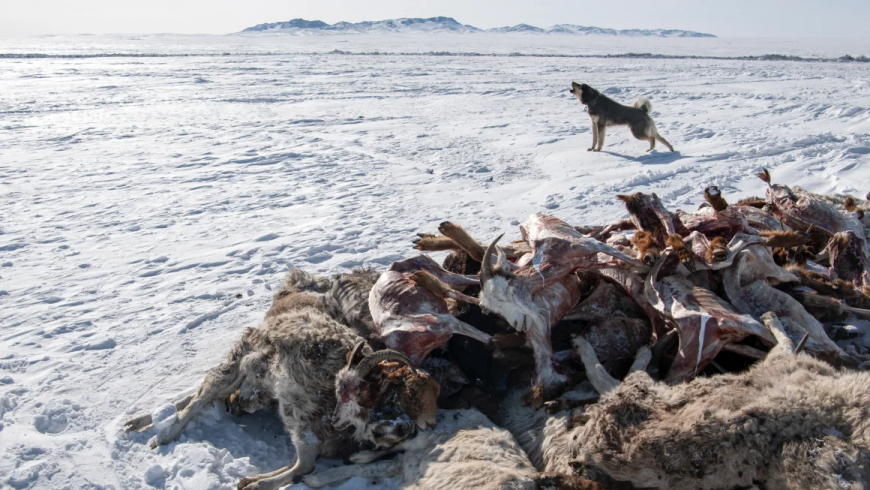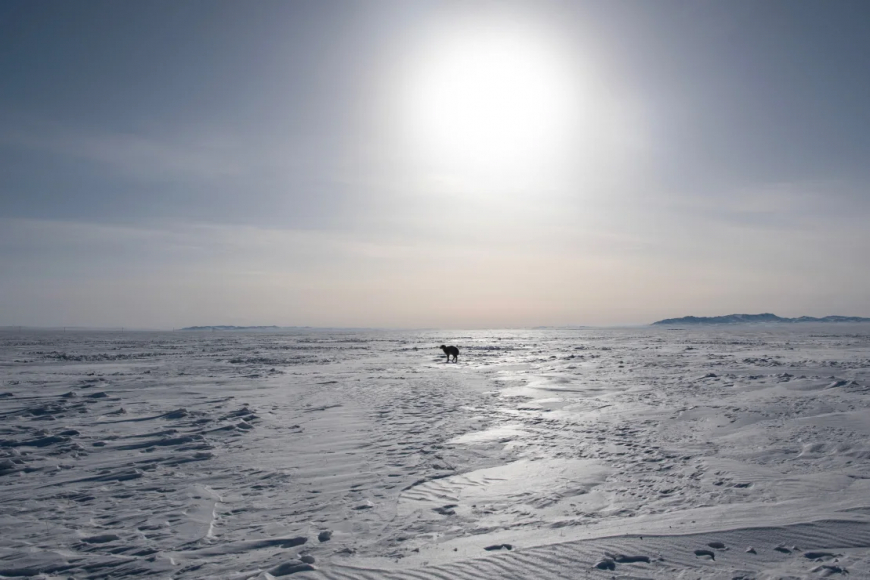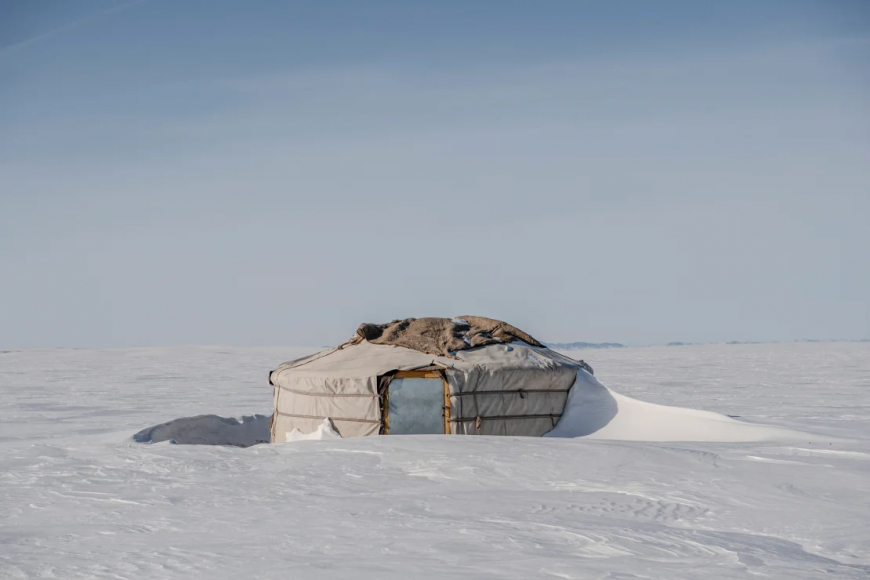Nearly 5 million animals dead in Mongolia’s harshest winter in half a century
Nearly 5 million animals dead in Mongolia’s harshest winter in half a century

Mongolia is freezing through its harshest winter in half a century with extreme conditions killing more than 4.7 million animals and threatening the livelihoods and food supply of thousands of people, the International Federation of the Red Cross has warned.
The severe conditions, known as dzud, are characterized by plunging temperatures and deep snow and ice that blanket grazing areas and cut off access to food for livestock.
About 300,000 people in Mongolia are traditional nomadic herders and depend on their cattle, goats and horses for food and to sell at market.
“For those people who are totally dependent on their livestock to survive, they have become destitute in just a few months,” Alexander Matheou, IFRC Regional Director for Asia Pacific told. “Some of them are now no longer able to feed themselves or heat their homes.”
Since November, at least 2,250 herder families have lost more than 70% of their livestock, according to the IFRC. More than 7,000 families now lack access to adequate food, it added.
The dzud has affected three-quarters of the country but conditions are expected to worsen as winter continues.

“Now it’s spring, but the winter is dragging on in Mongolia, there’s still snow on the ground, and the livestock are still dying,” said Matheou.
The Mongolian government declared a state of heightened readiness last month that would last until May 15, and on Tuesday the IFRC launched an appeal for funds to alleviate the suffering of people who have lost their livelihoods.
“Even with high levels of preparedness, which there has been in Mongolia this year and in previous years, it’s not adequate to cope with the extremity of the conditions,” said Matheou. “We’ve done a lot of preparedness and the scale of it still took us by surprise.”
The dzud has had a devastating economic toll for herders and caused disruptions to travel, trade and access to healthcare and education for many Mongolians, especially those living in rural areas, as heavy snow cuts off road access.
Why is this year’s dzud so bad?
Herder families often move with the seasons, traveling across the country’s vast grasslands to find new pastures to graze their livestock.
They use the summer months to grow fodder, grass and crops to see their animals through the winter.
While they are used to Mongolia’s bitter winters, a dzud — or “disaster” — comes when summer droughts are followed by heavy snowfall and extreme cold.
Temperatures can drop to -30 degrees Celsius (-22 degrees Fahrenheit) or lower.
This year’s snowfall has been the highest in 49 years, covering 90% of the country at its peak in January, according to the World Health Organization.
Last year’s summer started well with abundant rainfall. But a severe temperature drop and early snowfall in November preceded a sudden temperature rise, which caused that snow to thaw, according to the UN. That was followed by an extended cold snap that dropped below –40C in some areas.
That meant the pasture was poor so the animals couldn’t fatten themselves up before the winter, and herders couldn’t prepare enough hay to see them through.
Now, Mongolia has been hit with a dual “white” and “iron” dzud, which means very deep snow is preventing animals from reaching grass, combined with a hard freeze that locks pasturelands in ice.

Dzuds are becoming more frequent in Mongolia so the pasture and herders don’t have time to recover in between bouts of extreme weather.
“These dzuds are cyclical and they’re happening more and more often. It’s been six in the last 10 years… this is by far the worst. But they keep happening. They used to happen rarely now they’re happening often,” said the IFRC’s Matheou.
Mongolia is one of the countries most affected by the climate crisis, with average air temperatures increased by 2.1 degrees Celsius over the past 70 years, according to the UN Development Programme (UNDP).
Human-caused climate change has disrupted the country’s four distinct seasons, leading to a rise in recurrent summer droughts and subsequent harsh winters, according to UN agencies.
The impacts of this year’s crisis are forecast to be greater than the dzud that hit Mongolia in 2010, resulting in the deaths of 10.3 million livestock, according to the IFRC.
“We stand witness to the numerous struggles many herder households face from the loss of their precious livestock to the burdens of financial hardship, limited resources as well as immense pressures on people’s mental and physical health,” said Olga Dzhumaeva, head of the IFRC East Asia Delegation, in a statement.
“Yet we see the unwavering hope and resilience of so many families as they battle winter’s wrath with incredible strength. The ongoing livestock deaths, diminishing resources and deteriorating conditions of hundreds of thousands of people in Mongolia this winter is a stark reminder of the urgent need for assistance.”

 Phương Nhung
Phương Nhung 





